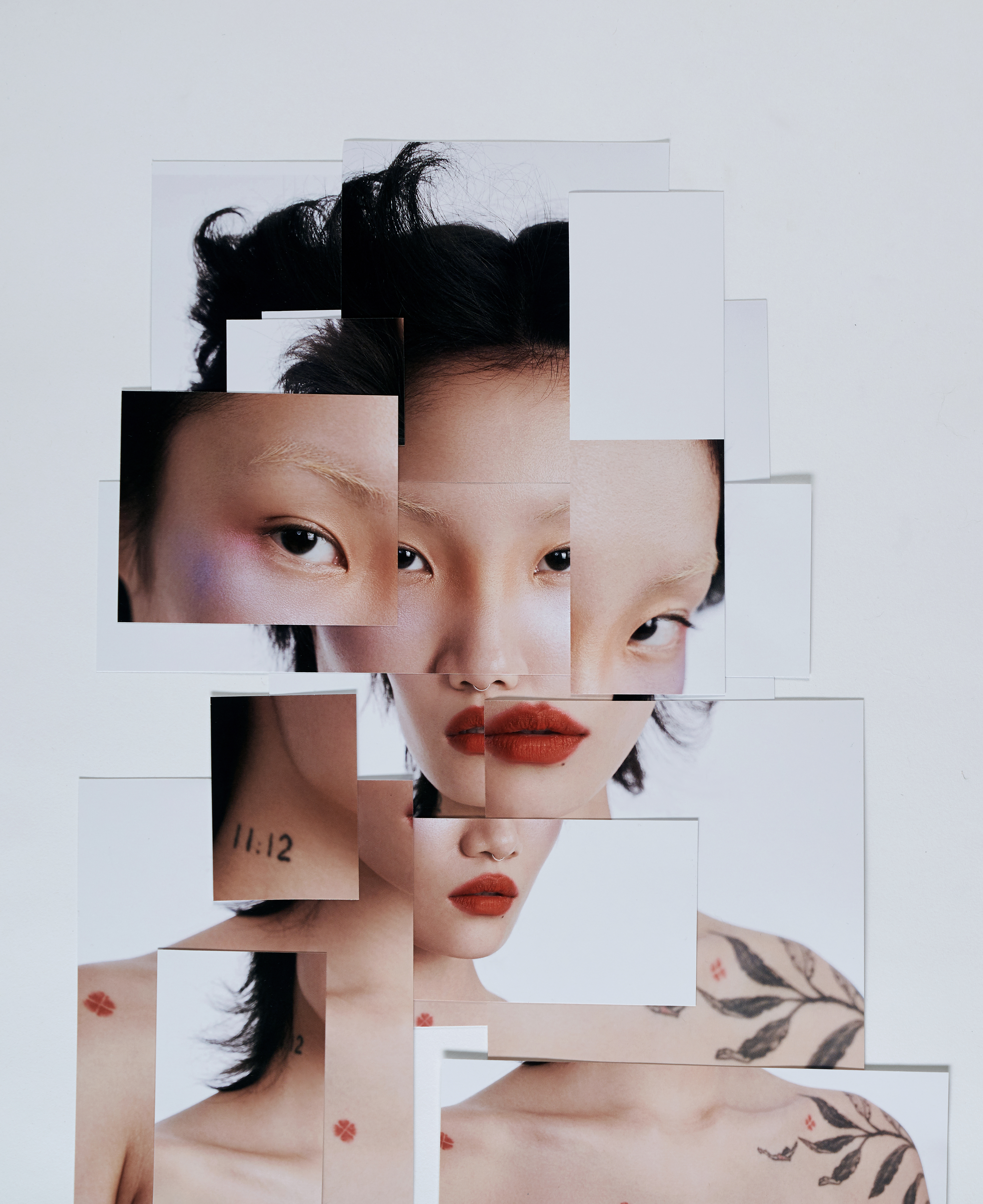
Pommade in Blonde. cheeks DIOR BACKSTAGE
Eye Palette in 002 Cool Neutrals. lips BOBBI BROWN
Pot Rouge for Lip & Cheeks in Calypso Coral
PHOTOGRAPHY 7.C STUDIO ART DIRECTION SHEN LY
MAKEUP JIANG NA & ANDY CREATION HAIR KIM / UPPERCUT SALON
MODEL ZHAO MENGZHI / FELIZ MODELS WORDS LAURA ANTONIA JORDAN
In Ottessa Moshfegh’s acerbic 2018 novel, My Year Of Rest And Relaxation, the unnamed narrator – a privileged, beautiful Upper East Sider – resolves to put herself into a prescription drug induced hibernation for a year. Days blur into months, her muscles wither, her sheets turn yellow. And all notions of self-care (a concept the caustic narrator would no doubt scoff at) disappear.
“I took a shower once a week at most,” she says. “I stopped tweezing, stopped bleaching, stopped waxing, stopped brushing my hair. No moisturising or exfoliating. No shaving.” We could never have guessed how prophetic these words would go on to feel just two years later.
Lockdown saw us all enter a kind of hibernation. We might not have gone into it as willingly as Moshfegh’s narrator does, but nevertheless there we were. And as a result of either novelty (why bother?) or necessity (the salons were closed) we, too, found ourselves free-falling towards unruly.
Unsurprisingly, many of us found our relationship with makeup changed during lockdown. But there wasn’t a one-size-fits-all
approach. While some relished the chance to go bare-faced, others held on to it with religious devotion, even when they took to cutting their hair themselves. For all, however, masks rendered lipstick irrelevant or, at the very least, a challenge.
Cosmetics-committed or not, lockdown raised the question of who we do all this for: is it for ourselves or for other people? When we put on makeup – whether that be a painstaking routine at a vanity table or a slapdash application on the bus – we are consciously choosing to change our face, an act that is both private and public. More often it is the only face others, even those who have been granted access to the shadiest crevices of our lives, ever see. My best friends might know the tragi-comicantics that alcohol-charged 20-something me got up to, but – courtesy of Bobbi Brown Corrector – even they don’t know that the clean living 36-year-old me still wakes up with bags under my eyes every single day.

I’ll happily admit that while I didn’t bother to get dressed (fully) everyday in lockdown, I remained committed to the smoky eye I’ve worn since my teens. Of course, there was still an element of doing this for others (daily video meetings with colleagues, FaceTime calls with a crush) but above all, it was for me. Really. Sitting down each morning to apply my eyeliner gave me
some connection to pre-pandemic normality. But it was the act as much as the effect that I desired, the ritual itself offering a sacred moment of sanctuary away from the chaos. I felt better, and so makeup remained non-negotiable in my morning routine, along with coffee and Instagram.
I’m not the only one. “During the darkest hours of the pandemic, I sometimes turned to the ritual of making myself up just for the meditation and self-care of it,” says Sarah Creal, co-founder and CEO of Victoria Beckham Beauty. “My journey with makeup has gone from experimentation and identity-finding as a teen and 20-something, to wearing makeup more for myself because when I look more rested (thank you, concealer), I feel more rested. Makeup is a psychological boost.”
“Studies suggest that we’re more productive and confident when we put effort into how we look to work from home and, as someone who has continued to wear makeup everyday throughout lockdown, it’s my view that the ritual of applying makeup has a big effect on how we feel about ourselves and is a form of self-care in its own right,” Creal continues. There was, she adds, a “move away from the ‘Insta-face’ of full glam makeup everyday and towards a more natural look, which is rooted in looking healthy and fresh-faced”. But that didn’t mean makeup was out, rather, customers spent 6.2 percent more per beauty item in 2020 compared to 2019.
But what now? Will our approach to makeup change as we take our first tentative steps back into freedom? What is emerging is a renewed sense of excitement and experimentation, the small but undeniable jolt of pleasure cosmetics can give. “We have been noticing our fashion consumer relishing in the joy of dressing up again, and this is also the case for makeup. There is a sense of fun in wearing a brighter lipstick – or just any lipstick,” says Newby Hands, global beauty director at NET-A-PORTER.
But, she adds, a year of reassessment – and an increase in interest in skincare during the past year – means changes, too. “A lot of women are looking for lighter bases as they don’t want to cover up their skin so much anymore,” she says. “Having invested so much time at home on improving their skin quality, they want a foundation to enhance it.” We don’t want to hide anymore.
Perhaps this year proved that we really do wear makeup for ourselves, but what we have missed is the joy of applying it for others too. The calming of butterflies as you apply a red lip before a first date. The emboldening application of mascara in the car window before you head into work on a Monday morning. The restorative slick of bronzer at your desk before dashing to dinner. The promise, once again, of being seen – and the thrilling beauty in that.









